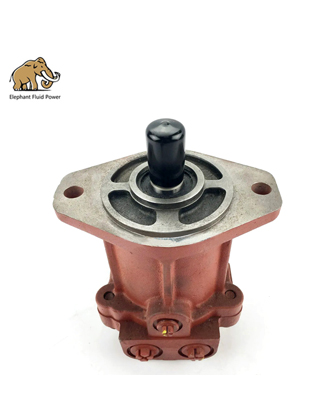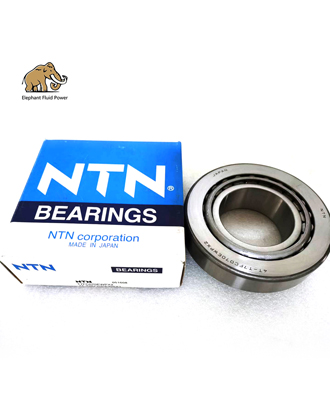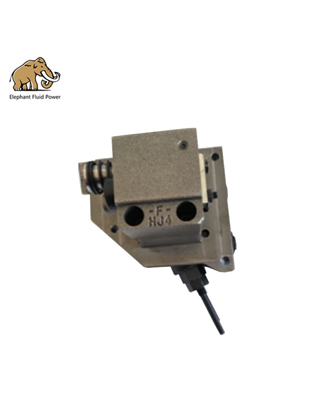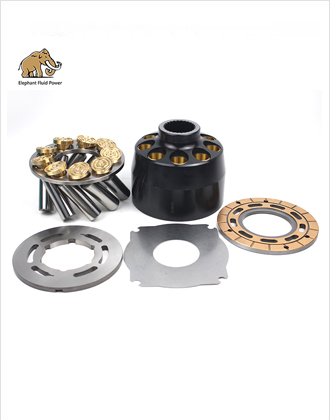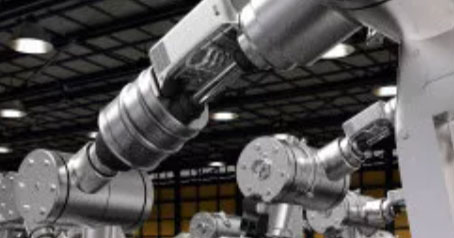1. Hydraulic motors and hydraulic pumps
In principle, hydraulic motors and pumps are mutual, that is to say, they are interchangeable. However, because they are used for different purposes, there are some structural differences. The structural characteristics of the high-speed hydraulic motor and the same type of pump are basically similar. However, it should be noted that split-valve hydraulic pumps cannot backflow, so they cannot be used as hydraulic motors, and there is no split-valve high-speed motor.
2. Understand the difference between hydraulic motors and hydraulic pumps
From the definition of the two hydraulic components, they are different. The hydraulic pump is a component that absorbs mechanical kinetic energy to produce hydraulic energy. Hydraulic motor is the opposite. The hydraulic pump is connected to the prime mover, the pump shaft has no additional radial load; when the hydraulic motor is connected to the sprocket, pulley, gears and other loads, its main shaft will be subject to higher radial load. The low-pressure chamber of a hydraulic pump is usually a vacuum. To improve suction performance and erosion resistance, the suction nozzle is usually larger than the high pressure nozzle; this is not required for hydraulic motors.
Hydraulic motors require forward and reverse rotation, so the internal structure has to be symmetrical; whereas hydraulic pumps generally rotate in one direction, so there is no such requirement. For example, the blade of the vane motor can only be arranged radially, can not be tilted like the vane pump, otherwise the blade will break when changing direction; axial piston motors require symmetrical design of the distribution plate, while the axial piston pump is not; gear motor must have a separate leak tube, can not be like the gear pump will leak directly into the low pressure chamber.
Hydraulic motor speed range is wide, in the choice of bearing form and lubrication method should meet. For example, low-speed dynamic pressure bearings, because it is not easy to form an oil film, it is appropriate to use rolling bearings or static bearings; and hydraulic pumps, although high speed but small changes, without this demanding requirements. Hydraulic motor minimum stable speed is low. Some hydraulic motors need variable speed and braking. Hydraulic motors should have a large starting torque to overcome static friction during start-up and have sufficient starting torque when pressure fluctuations are at their lowest. For example, to reduce internal friction in hydraulic motors, gear motors have a high number of teeth; the compression coefficient of the axial clearance compensation device is less than that of the pump.
The hydraulic pump must be self-priming in construction. Point contact axial piston motors (no spring at the bottom of the plunger) cannot be used as pumps because they are not self-priming. Vane pump vanes are thrown out by centrifugal force to form a working chamber; if used as a motor, the vanes do not form an external force in the working chamber when started and therefore do not work. To reduce friction, some plunger motors have had the slipper removed and become point contact hydraulic motors, whereas plunger pumps cannot be used without the slipper.
 French
French
 Portuguese
Portuguese
 Russian
Russian
 German
German
 Spanish
Spanish
 Japanese
Japanese
 Korean
Korean
 Irish
Irish
 Greek
Greek
 Turkish
Turkish
 Italian
Italian
 Danish
Danish
 Romanian
Romanian
 Indonesian
Indonesian
 Czech
Czech
 Afrikaans
Afrikaans
 Swedish
Swedish
 Polish
Polish
 Basque
Basque
 Catalan
Catalan
 Esperanto
Esperanto
 Hindi
Hindi
 Lao
Lao
 Albanian
Albanian
 Amharic
Amharic
 Armenian
Armenian
 Azerbaijani
Azerbaijani
 Belarusian
Belarusian
 Bengali
Bengali
 Bosnian
Bosnian
 Bulgarian
Bulgarian
 Cebuano
Cebuano
 Chichewa
Chichewa
 Corsican
Corsican
 Croatian
Croatian
 Dutch
Dutch
 Estonian
Estonian
 Filipino
Filipino
 Finnish
Finnish
 Frisian
Frisian
 Galician
Galician
 Georgian
Georgian
 Gujarati
Gujarati
 Haitian
Haitian
 Hausa
Hausa
 Hawaiian
Hawaiian
 Hebrew
Hebrew
 Hmong
Hmong
 Hungarian
Hungarian
 Icelandic
Icelandic
 Igbo
Igbo
 Javanese
Javanese
 Kannada
Kannada
 Kazakh
Kazakh
 Khmer
Khmer
 Kurdish
Kurdish
 Kyrgyz
Kyrgyz
 Latin
Latin
 Latvian
Latvian
 Lithuanian
Lithuanian
 Luxembourg
Luxembourg
 Macedoniar
Macedoniar
 Malagasy
Malagasy
 Malay
Malay
 Malayalam
Malayalam
 Maltese
Maltese
 Maori
Maori
 Marathi
Marathi
 Mongolian
Mongolian
 Burmese
Burmese
 Nepali
Nepali
 Norwegian
Norwegian
 Pashto
Pashto
 Persian
Persian
 Punjabi
Punjabi
 Serbian
Serbian
 Sesotho
Sesotho
 Sinhala
Sinhala
 Slovak
Slovak
 Slovenian
Slovenian
 Somali
Somali
 Samoan
Samoan
 Scots Gaelic
Scots Gaelic
 Shona
Shona
 Sindhi
Sindhi
 Sundanese
Sundanese
 Swahili
Swahili
 Tajik
Tajik
 Tamil
Tamil
 Telugu
Telugu
 Thai
Thai
 Ukrainian
Ukrainian
 Urdu
Urdu
 Uzbek
Uzbek
 Vietnamese
Vietnamese
 Welsh
Welsh
 Xhosa
Xhosa
 Yiddish
Yiddish
 Yoruba
Yoruba
 Zulu
Zulu

